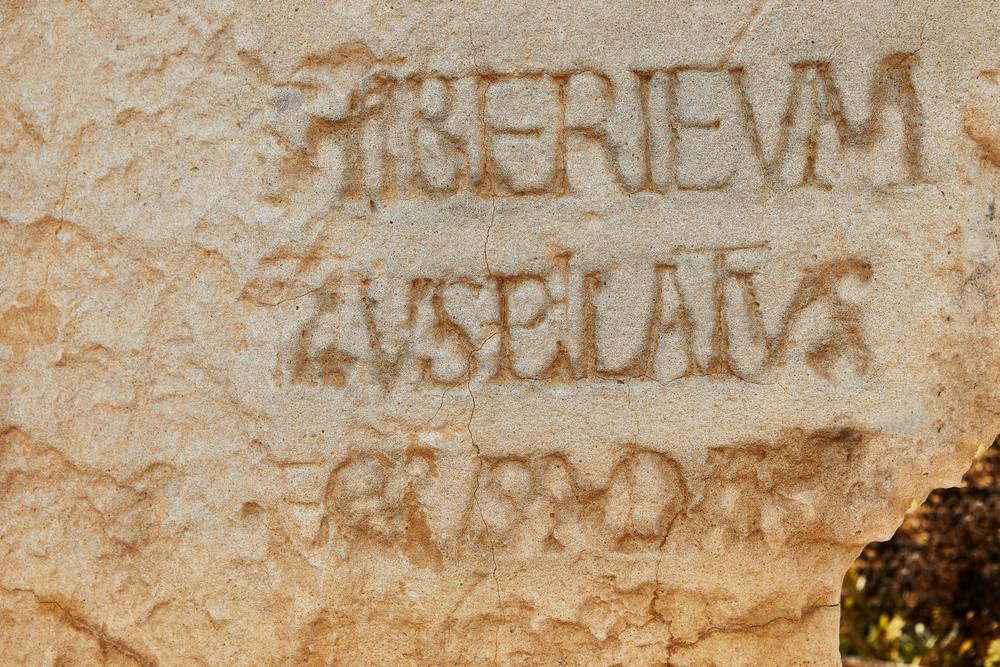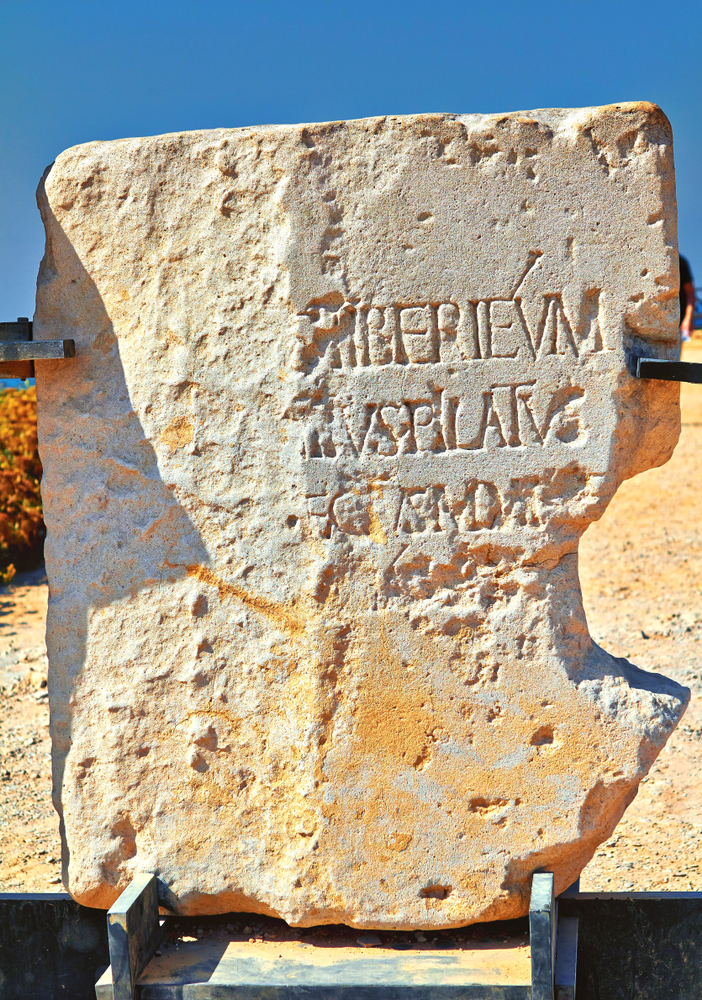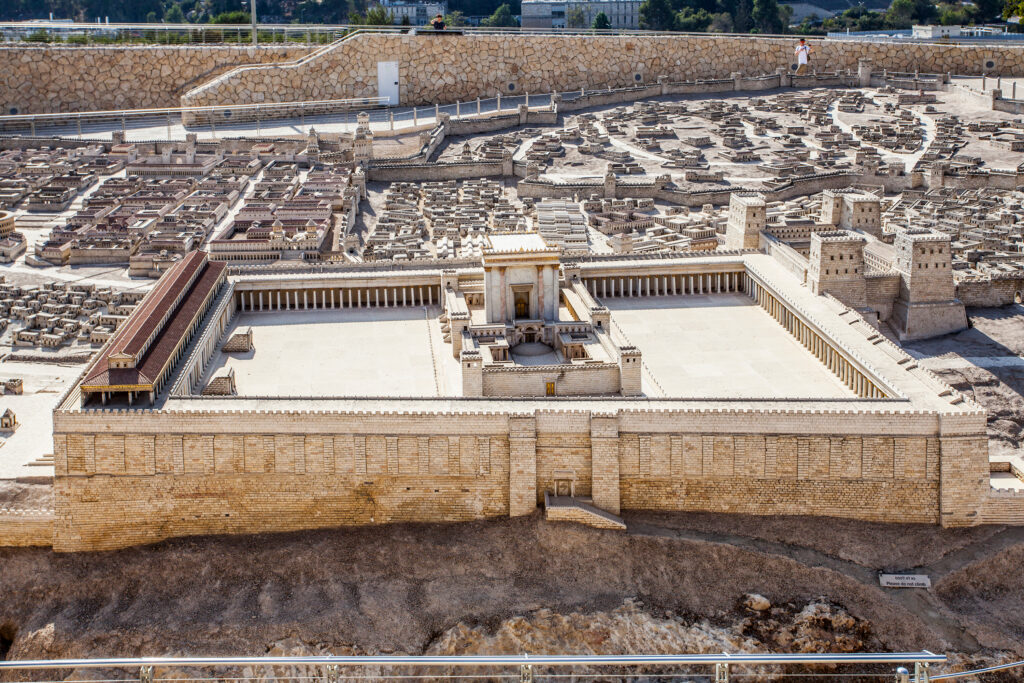Ancient 2,000-Year-Old Find Confirms the Existence of the Man Who Sentenced Jesus to Death

For nearly two millennia, Pontius Pilate was known primarily as a name spoken in churches and written in scriptures. He was the Roman governor who, according to the Bible, sentenced Jesus Christ to death and became one of the most infamous figures in human history. His name was whispered in prayers, echoed in cathedrals, and debated by scholars. Yet, for centuries, historians had little to no physical evidence to prove he ever truly existed. The absence of proof left a gap between faith and historical certainty.
That all changed in 1961 when archaeologists unearthed a stone that turned a Biblical figure into a verified historical one. The find was not just an artifact but a revelation that connected myth, faith, and fact. It served as a tangible bridge between scripture and archaeology, inspiring curiosity across both religious and academic worlds.
The discovery, found amid the ruins of an ancient Roman theatre on the coast of modern-day Israel, would become one of the most fascinating intersections between archaeology and faith ever recorded. It did more than confirm a man’s existence. It connected the world of belief to the tangible traces of human history, showing that even the stories we think of as purely spiritual may have deep historical roots.

The Pilate Stone and Its Hidden Message
While excavating in Caesarea Maritima, a once-vibrant city on the Mediterranean coast, a team of Italian archaeologists stumbled upon a limestone block that bore a faint but powerful inscription. Though only a fragment, the letters etched into its weathered surface told a story that had waited two thousand years to be rediscovered.
The inscription read: “S TIBERIÉUM, US PILATUS, ECTUS IUDA E, E.” After careful reconstruction, experts determined that the full message originally stated:
“DIS AUGUSTIS TIBERIÉUM, PONTIUS PILATUS, PRAEFECTUS IUDAEAE, FECIT DEDICAVIT.”
Translated, this means: “To the Divine Augusti Tiberieum, Pontius Pilate, Prefect of Judea, has dedicated this.”
This simple dedication, carved for a public building, offered the first direct, physical proof of Pontius Pilate’s rule in Judea under Emperor Tiberius. The discovery became known as the Pilate Stone, a name that now carries almost mythical weight among historians and theologians alike.
From Scripture to Stone: Why It Mattered
For centuries, scholars debated whether Pontius Pilate was a historical figure or a symbolic construct. The Roman Empire was known for its meticulous recordkeeping, yet direct documentation of Pilate’s governance was missing. Mentions of him appeared in Roman historian Josephus’ writings and the works of the philosopher Philo, but these were secondhand accounts. None offered the irrefutable evidence that archaeologists seek.
Then came the Pilate Stone, solid, inscribed, and undeniably ancient. It not only confirmed that Pilate existed but also validated the Gospel accounts that placed him in charge of Judea during Jesus’ lifetime. The discovery was a bridge between faith and fact, linking the Biblical narrative to Roman history with unprecedented clarity.
Unearthed in 1961 at Caesarea Maritima, the limestone slab bore an inscription dedicating a building to Emperor Tiberius, naming Pontius Pilate, Prefect of Judea, as the benefactor. This simple inscription transformed centuries of speculation into historical certainty. It was the tangible proof that one of the Bible’s most infamous figures had walked the earth as a Roman governor.
The Pilate Stone continues to be a powerful reminder of how archaeology can illuminate ancient texts. In an age where skepticism and belief often clash, discoveries like this remind us that history still has secrets waiting beneath the soil, secrets that can turn faith into fact and legend into legacy.

The Man Behind the Judgment
According to Biblical accounts, Pontius Pilate presided over the trial of Jesus and ultimately ordered his crucifixion. He is remembered for a symbolic gesture that has echoed through centuries: washing his hands before the crowd to show he wanted no part in Jesus’ death.
Yet the Pilate revealed by history was more complex than the one portrayed in Sunday sermons. Roman records indicate that he ruled Judea with a heavy hand. Ancient sources describe him as a man of authority and cruelty, who clashed frequently with local populations.
After his tenure in Judea, Pilate reportedly fell from grace. He was accused of ordering the massacre of a group of Samaritans searching for sacred relics. Their complaints reached the Roman authorities, and Pilate was dismissed from his post. He was sent back to Rome to answer for his actions but never faced a formal trial. Emperor Tiberius died before any judgment could be rendered. Some later accounts suggest that Pilate may have taken his own life, fading into obscurity after a turbulent career.
Unearthing the Past: The Work of Archaeology
The Pilate Stone is now housed in the Israel Museum in Jerusalem, where visitors can stand before the artifact that rewrote part of Biblical history. Its discovery underscores the remarkable role archaeology plays in uncovering truths long buried by time.
Archaeology does not merely unearth objects. It brings to life stories that were once confined to belief or legend. Every fragment, inscription, or artifact offers a whisper from the past, reminding us that history and faith are often two sides of the same coin.
The discovery was not the end of Pilate’s story. Since then, coins bearing his name and title have also been found, further confirming his role as Prefect of Judea. Each find adds depth to our understanding of how religion, politics, and empire intertwined in the first century.

The Legacy of Proof
The Pilate Stone represents more than a name etched in stone. It stands as a testament to humanity’s ongoing search for truth. In a world often divided between faith and science, this discovery offered common ground. It showed that stories handed down for centuries may still carry traces of reality waiting to be unearthed.
For believers, it was validation that their sacred texts contained echoes of historical fact. For historians, it was a triumph of evidence over speculation. For the world, it was a reminder that history is a living dialogue between what we believe and what we can prove.
Beyond its historical and religious significance, the Pilate Stone also invites reflection on the fragile nature of memory and legacy. Centuries can erode empires and fade records, yet a single piece of carved stone can revive a lost chapter of human history. It reminds us that the past is never truly gone; it simply waits, patient and silent, for those willing to uncover it.
What History Leaves Behind
The story of Pontius Pilate’s rediscovery invites us to reflect on the fragility of memory and the endurance of truth. For two thousand years, his name survived through scripture and storytelling. Then, with a single stone, the ancient world spoke again.
Perhaps that is the true fascination of discoveries like this one. They remind us that our past is not lost. It is merely waiting beneath the surface, ready to reveal the lives, choices, and legacies that shaped the world we know today.
Feature image credit: Courtesy of AlexDonin | Shutterstock
Loading...

